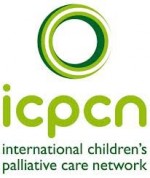Zika Virus and children's palliative care
 The ICPCN has responded as follows to the sudden increase in children born with microcephaly in certain countries and the likely link to mothers being infected by the Zika virus during pregnancy.
The ICPCN has responded as follows to the sudden increase in children born with microcephaly in certain countries and the likely link to mothers being infected by the Zika virus during pregnancy.
"As the ICPCN we are concerned about the reported number of babies born with microcephaly and other neurological complications, especially in Brazil and in the Americas, and we are pleased that the World Health Organization (WHO) has advised that this situation constitutes an extraordinary event and public health threat. Whether or not the Zika virus will be shown to be the cause, the real tragedy is the thousands of babies born with these anomalies and the impact on so many families left caring for babies with disabilities and a possible limited life-expectancy.
While we fully support WHO Director-General Dr Margaret Chan’s call for an international response to reduce the threat; as concerned children’s palliative care advocates we call for an international response to provide palliative care, including support for the families, from the perinatal period and throughout the shortened lives of many of these very vulnerable babies.“
Joan Marston, CEO
Link to birth defects
There have been reports of pregnant mothers infected with the Zika virus during pregnancy giving birth to babies with congenital microcephaly, a condition where a baby's head is considerably smaller than normal. Studies are in progress to investigate this association. Microcephaly can be diagnosed during pregnancy with ultrasound, most successfully late in the 3rd trimester.
While this link has not as yet been fully established, the Centre for Disease Control recommends special precautions for all women who are pregnant and for those considering becoming pregnant.
Some facts
- The Zika virus is spread primarily through the bite of an infected Aedes species of mosquito.
- Symptoms are usually mild and can include fever, rash, joint pain and conjunctivitis which appear between 2 to 7 days after being bitten by an infected mosquito.
- Zika can only be confirmed via blood tests
Prevention: The best prevention is to avoid being bitten by wearing protective clothing and using insect repellent. However, it is not recommended to use insect repellent on children younger than 2 years of age.
Prevalence: Click here for a map showing where there is presently active transmission of the Zika virus.
Guidelines: ICPCN is developing a set of guidelines on providing palliative care for children with microcephaly and other neurological conditions. These guidelines will be made available on our website and will include translations in Spanish and Portuguese.
ICPCN website: http://www.icpcn.org/


